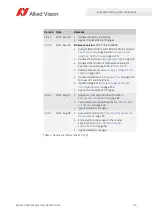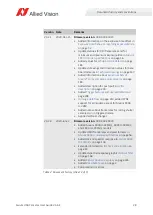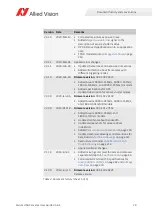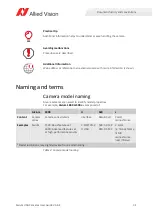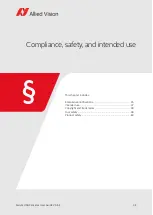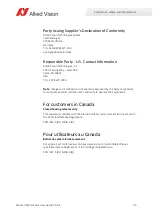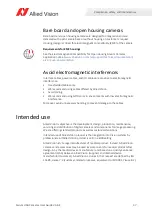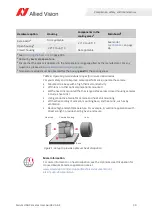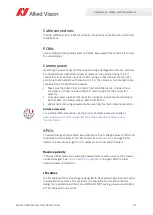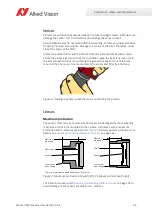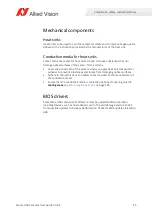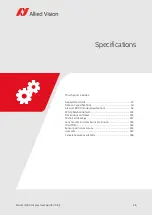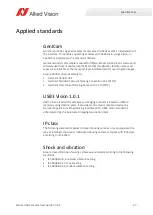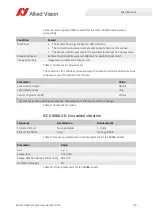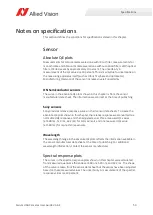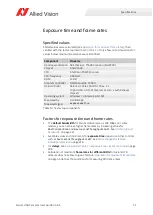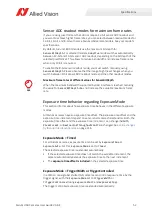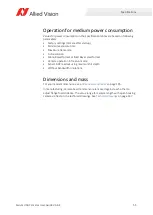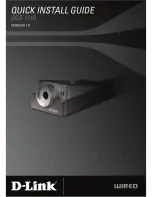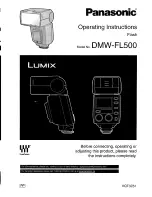
40
Alvium USB Cameras User Guide V3.6.4
Compliance, safety, and intended use
Camera mounting
Housed cameras must be mounted using the mounting threads. If vibration is
higher than specified, cameras can disconnect from the mounting base. Falling
cameras can hurt you. To avoid personal injury:
• Mount the camera according to the instructions in
• Ensure, shock and vibration do not exceed the specified range, see
• Use a lens support if you want to use
.
Heavy lenses
• For non-static applications, use lenses with a mass less than 70 grams and a
length less than 38 mm, where the center of gravity is 20 mm, measured from
the lens mount front flange. For heavier or longer lenses, use a lens support
and apply additional tests. For more information, please contact support at
www.alliedvision.com/en/about-us/contact-us/technical-support-repair-/
.
Product safety
To prevent material damage, read the following and understand how to safely
handle and operate the camera. Get helpful details about electrical connections
and learn how to optimize camera performance.
Electrical connections
ESD
ESD is dangerous for electronic devices, especially when tools or hands get in
contact with connectors and electronic components. We recommend measures to
avoid damage by ESD:
• Unpacking: Remove the camera from its anti-static packaging only when your
body is grounded.
• Workplace: Use a static-safe workplace with static-dissipative mat and air
ionization.
• Wrist strap: Wear a static-dissipative wrist strap to ground your body.
• Clothing: Wear ESD clothing. Keep components away from your body and
clothing. Even if you are wearing a wrist strap, your body is grounded but your
clothes are not.
• Bare board and open housing cameras: use a special ESD housing.

